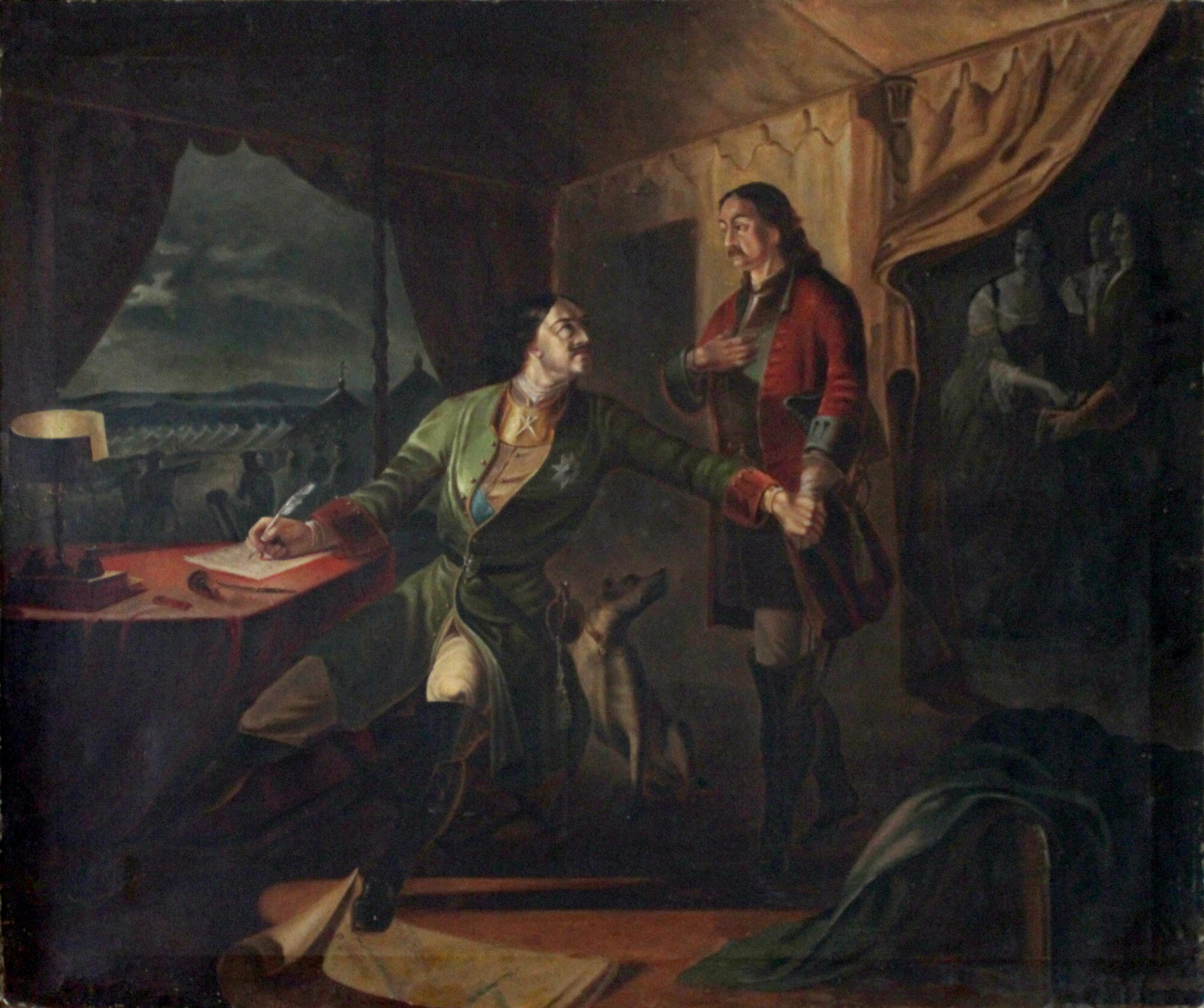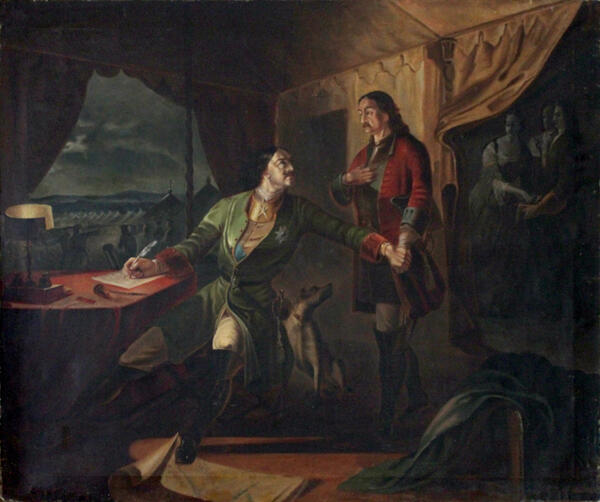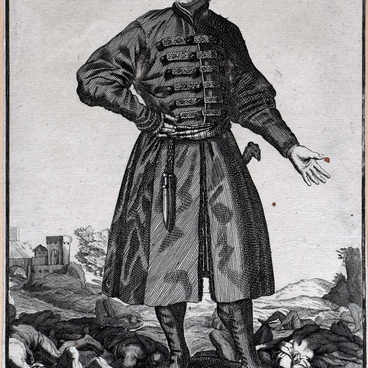In the book of receipts of the Tambov Regional Museum, the painting was registered as “Peter I and Cantemir”. However, during attribution and based on available iconographic materials (including lithographs from the collection of the State Russian Museum) the actual subject of the painting and reattributed the original work to another artist.
Nevertheless, the story of Dimitrie Cantemir (Dimitri Konstantinovich Kantemir) is extremely interesting. The writer and orientalist ascended to the Moldavian throne after the outbreak of the war between Russia and the Ottoman Empire. On April 13, 1711, Cantemir and Peter I signed a contract. The Moldavian ruler accepted the role of Peter’s adviser on eastern issues and was obliged to report on the Turkish situation. The Principality of Moldavia became Russia’s subject, preserving its sovereignty, traditions and privileges, getting the lands previously seized by the Turks back, and becoming exempt from Turkish taxes. The Sublime Porte was furious and demanded to hand over the traitor, but Peter refused.
In July 1711, the Russian army, commanded by Count Sheremetev, marched into Moldavia against the Turks. Peter the Great went with the army. The campaign turned out to be unsuccessful: the 120,000-strong enemy army and the 70,000-strong cavalry of the Crimean Tatars pressed the Russian army of only 40,000 units, to the right side of the Pruth River.
Peter I, realizing the senselessness of a breakthrough, was forced to agree to negotiations and sign the Treaty of the Pruth.
When the Pruth campaign turned out to be a failure for the Russian army, Prince Dimitri, his family and a thousand Moldavian boyars were forced to flee to Russia from the persecution of the Ottomans. Here Cantemir received a princely title, a significant pension and territories, as well as the “right of life and death” over his subjects.
Returning to the plot of the lithography, it is worth noting that the publisher Andrey Prevost came up with the idea of printing large-format lithographed sheets for the 170th anniversary of the birth of Peter I. This painting depicts the rescue of Peter the Great by Catherine during the Russo-Turkish War of 1710–1713. Peter I is in his tent sitting at a table. A map of the Ottoman Empire is lying on the floor at his feet. Menshikov with his head bowed is standing in front of Peter. In the background, Catherine’s jewels are handed to two courtiers.
When depicting this episode of the Pruth River Campaign,
the Russian artists (Ivan Deshevoy from the original by Vasily Demidov, “Peter
the Great at the Pruth River in 1711”) show Peter in a tent consulting with
Menshikov with the figure of Catherine in the background.



